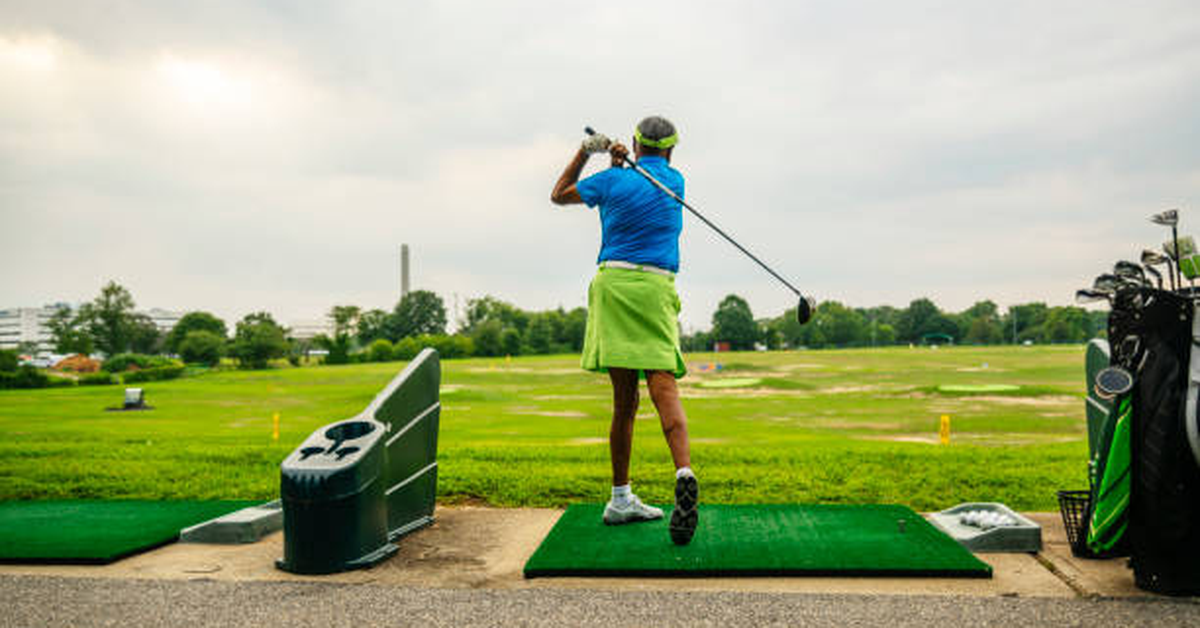
Golf is a sport admired for its combination of skill, precision, and strategy. For both seasoned golfers and beginners, practice plays an essential role in improving performance. One of the most important facilities for practice is the driving range. More than just a place to hit golf balls, the driving range is a learning environment that allows golfers to enhance swing mechanics, develop consistency, improve distance control, and refine mental focus.
In this in-depth article, we will cover everything there is to know about driving ranges, including their purpose, design, benefits, equipment, etiquette, training drills, technological advancements, and how they fit into modern golf culture.
What is a Driving Range?
A driving range is a dedicated practice area designed for golfers to hit balls repeatedly in order to work on swing techniques, accuracy, and distance. Unlike a golf course, which requires walking from hole to hole, a driving-range allows continuous practice without interruption.
Ranges usually consist of:
- A long open field with distance markers.
- Hitting bays, either open-air or sheltered.
- Buckets of practice balls.
- Targets placed at different yardages.
- Turf mats or natural grass hitting surfaces.
Driving ranges may be located as standalone businesses or integrated into golf clubs and resorts.
Evolution of Driving Ranges
The concept of the driving range has evolved dramatically.
- Early 1900s: Golfers often practiced in open fields, without structured facilities.
- Mid-20th Century: Ranges began appearing alongside golf courses to attract beginners.
- Late 20th Century: Technological advances such as automated ball dispensers and distance targets became common.
- 21st Century: Today’s ranges feature advanced technology, including swing analysis systems, video replay, and simulation-based training.
Driving ranges have gone from being basic practice spaces to sophisticated training centers.
Benefits of Practicing at a Driving Range
The driving-range provides unique benefits that even playing a full round cannot offer.
Table: Benefits of Driving Range Practice
| Benefit | Description |
|---|---|
| Consistency | Repetition builds muscle memory for consistent swing mechanics. |
| Distance Control | Targets help golfers measure distances and improve shot control. |
| Swing Experimentation | Ability to test grips, stances, and clubs without pressure of a game. |
| Mental Focus | Develops concentration and visualization skills in a controlled setting. |
| Time Efficiency | Practice a large volume of shots in a short period. |
| Beginner-Friendly | A safe, non-intimidating environment to learn golf basics. |
These advantages explain why driving-ranges are often the first stop for beginners and a regular training ground for professionals.
Types of Driving Ranges
Driving-ranges are not all the same; they differ in design, features, and user experience.
1. Traditional Ranges
- Feature open fields with grass or turf mats.
- Include distance markers and flag targets.
- Basic but effective for repetitive practice.
2. Indoor Driving Ranges
- Located within sports centers or urban settings.
- Use nets or simulators instead of open fields.
- Great for all-weather practice.
3. High-Tech Ranges
- Equipped with ball-tracking technology (e.g., Toptracer).
- Provide data on ball speed, spin rate, launch angle, and carry distance.
- Often paired with entertainment, food, and social experiences.
4. Golf Club Integrated Ranges
- Part of private or public golf courses.
- Usually feature natural grass hitting areas.
- Cater to members and serious golfers.
Essential Equipment for a Driving Range Session
To make the most out of your driving range practice, certain equipment is essential:
Table: Driving Range Equipment Checklist
| Equipment | Purpose |
|---|---|
| Golf Clubs | Usually a full or partial set, including driver, irons, wedges. |
| Golf Balls | Provided by the range, often lower-quality than course balls. |
| Tees | For practicing drives with a driver or fairway wood. |
| Golf Glove | Improves grip and prevents blisters. |
| Golf Shoes | Stabilize stance during swings. |
| Rangefinder (optional) | Helps measure distances and track progress. |
While ranges provide practice balls, serious golfers often bring their own clubs and accessories.
Etiquette at the Driving Range
Respect and discipline are as important at the driving-range as they are on a golf course.
- Rotate Hitting Spots: Avoid monopolizing one bay when the range is busy.
- Pick Up After Yourself: Dispose of broken tees and trash.
- Safety First: Ensure no one is standing too close when swinging.
- Volume Control: Loud conversations or phone use can distract others.
- Respect Pace: Don’t take too long when others are waiting for bays.
Good etiquette makes the driving range enjoyable for everyone.
Training Drills to Try at the Driving Range
Practicing aimlessly at the range may not improve performance. Structured drills ensure efficient progress.
1. Target Practice Drill
- Pick a specific flag or marker at 100, 150, or 200 yards.
- Practice hitting multiple shots until consistent accuracy is achieved.
2. Club Progression Drill
- Start with wedges, move through irons, then woods, and finish with the driver.
- Builds rhythm and control.
3. Fairway Simulation Drill
- Imagine playing a specific hole.
- Use the driver, then follow with an iron, practicing course-like conditions.
4. Alignment Drill
- Place clubs on the ground parallel to your target line.
- Improves setup and swing path accuracy.
5. Distance Control Drill
- Focus on half-swings and three-quarter swings.
- Helps refine touch with wedges and short irons.
Technology in Driving Ranges
Modern ranges have embraced technology to enhance training and entertainment.
- Launch Monitors: Devices like TrackMan measure swing data in real time.
- Ball-Tracking Systems: Provide instant statistics about ball trajectory and spin.
- Video Analysis: Allows players to visually review their swings.
- Golf Simulators: Enable play on virtual versions of famous courses.
- Mobile Integration: Apps track progress, store swing data, and suggest improvements.
Technology has transformed the range from a repetitive practice ground into a data-driven learning environment.
Driving Ranges as Entertainment Venues
The rise of venues like Topgolf shows how driving ranges are no longer limited to practice. They are also social and recreational centers where groups enjoy golf in a casual, fun, and competitive format.
- Food and beverage services.
- Interactive scoring systems.
- Music and event spaces.
- Family-friendly environments.
This entertainment-focused model has introduced golf to a younger, more diverse audience.
Common Mistakes at the Driving Range
While practicing, golfers often make errors that limit progress:
- Hitting Without a Plan: Randomly striking balls without goals.
- Overusing the Driver: Neglecting irons and wedges.
- Ignoring Alignment: Poor setup habits translate to course struggles.
- Swinging Too Hard: Focusing on power over accuracy.
- Skipping Warm-ups: Leads to inconsistency and possible injuries.
Awareness of these mistakes ensures better results.
Driving Range vs Golf Course Practice
Table: Comparison Between Range Practice and On-Course Play
| Aspect | Driving Range | Golf Course |
|---|---|---|
| Repetition | Unlimited swings | Limited to course flow |
| Focus | Specific swing mechanics, drills | Real-game strategy, shot variety |
| Time Efficiency | 30–60 minutes | 3–5 hours |
| Pressure | Low, controlled environment | High, real competition |
| Cost | Low (bucket of balls) | Higher (greens fees, caddie, cart, etc.) |
Both environments are essential, but the range builds skills while the course tests them.
Health and Fitness Benefits
Practicing at a driving range is not just about golf skills; it has physical and mental health benefits:
- Cardio & Flexibility: Swinging repeatedly improves mobility and stamina.
- Stress Relief: Provides a calming outlet after work or school.
- Focus & Discipline: Sharpens concentration through repetitive practice.
- Low-Impact Exercise: Gentle on joints compared to high-intensity sports.
This makes golf practice suitable for people of all ages.
The Future of Driving Ranges
Driving ranges are expected to evolve further, blending sport, technology, and recreation.
- AI-powered swing coaching.
- Wearable devices tracking biomechanics.
- Greater integration of VR/AR golf simulations.
- More urban indoor ranges for city dwellers.
- Green initiatives: eco-friendly balls and solar-powered facilities.
The future is about accessibility, sustainability, and technological innovation.
Conclusion
The driving range is more than just a place to hit golf balls. It is a training ground, recreational space, and social hub. For beginners, it provides a safe space to learn; for advanced golfers, it refines precision; and for families and friends, it offers a fun outing.
By combining practice, technology, and entertainment, driving ranges represent the modern face of golf — accessible, inclusive, and forward-looking.
Anyone serious about improving their game should make the driving range a regular part of their golfing journey.
FAQs
Q1. What is the purpose of a driving range?
It provides golfers with a dedicated space to practice swings, accuracy, and distance without the need for a full course.
Q2. Do you need your own clubs for a driving range?
Not always. Many ranges rent clubs, though bringing your own ensures better familiarity and practice quality.
Q3. How long should I spend at the driving range?
A typical session lasts 45 minutes to an hour, but it depends on practice goals and stamina.
Q4. Are driving ranges suitable for beginners?
Yes, they are beginner-friendly and provide a low-pressure environment to learn golf fundamentals.
Q5. How are entertainment ranges like Topgolf different?
They combine golf with technology, games, food, and music, creating a fun social experience beyond traditional practice.







